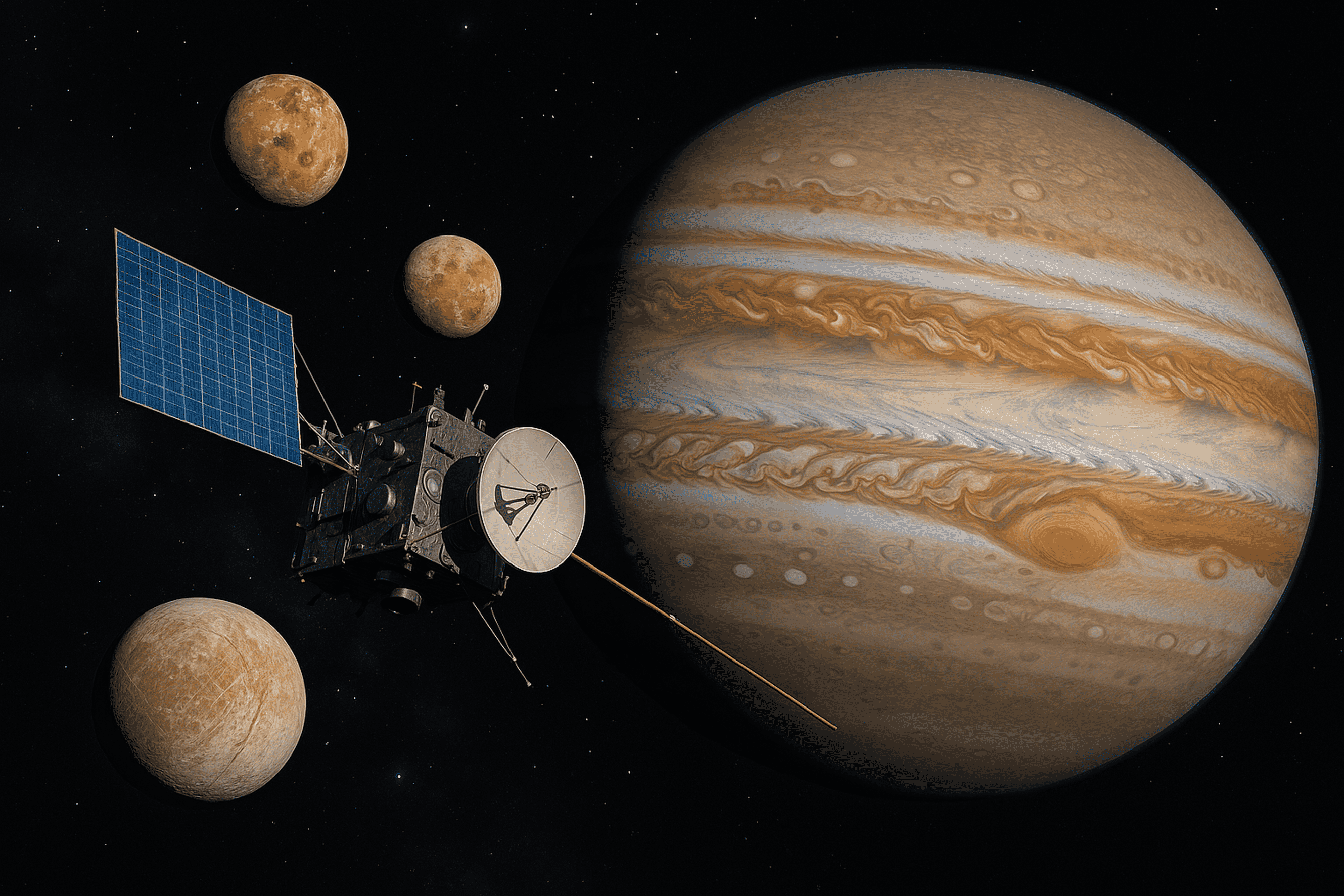JUICE: Exploring the Icy Moons of Jupiter.
The JUpiter ICy Moons Explorer, known as JUICE, is a groundbreaking space mission led by the European Space Agency (ESA). Launched on April 14, 2023, aboard an Ariane 5 rocket, JUICE is set to embark on an ambitious journey to the Jovian system, with a primary focus on Jupiter’s three largest icy moons: Ganymede, Callisto, and Europa. These moons are of immense scientific interest because they are believed to harbor subsurface oceans, making them potential habitats for extraterrestrial life.
JUICE’s voyage is long and complex. It will take over eight years to reach Jupiter, arriving in July 2031 after performing multiple gravity assists from Earth, the Moon, and Venus. This extended trajectory allows the spacecraft to build up the speed necessary to reach its distant destination, while also testing advanced navigation and propulsion techniques.
Once in the Jovian system, JUICE will spend at least three and a half years studying the planet and its environment. However, the true highlight of the mission will be its close flybys of Europa, Callisto, and especially Ganymede—the largest moon in the solar system and the only one known to have a magnetic field. These moons are covered with thick layers of ice, beneath which scientists suspect vast oceans of liquid water exist.
JUICE is equipped with 10 state-of-the-art instruments, including radar to probe beneath the surface of the ice, spectrometers to analyze surface and atmospheric composition, and magnetometers to study the moons’ internal structures and magnetic environments. These tools will help scientists better understand the geology, chemistry, and potential habitability of these celestial bodies.
One of JUICE’s most exciting goals is to determine whether these moons could support microbial life. While JUICE will not be able to drill through the ice, it can gather enough data to inform future missions—possibly involving landers or subsurface probes.
The mission will conclude with JUICE becoming the first spacecraft in history to orbit a moon other than Earth’s: Ganymede. This final phase will offer unparalleled insights into the moon’s magnetic field, internal ocean, and surface features.
In summary, JUICE represents a monumental step forward in the exploration of our solar system. By studying Jupiter’s icy moons in unprecedented detail, ESA hopes to unlock secrets about planetary formation, habitability, and the potential for life beyond Earth.
JUICE (Jupiter Icy Moons Explorer)
Launch Date: 14/04/2023
Agency: ESA
